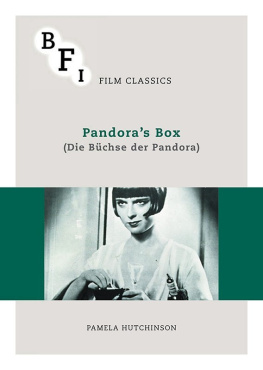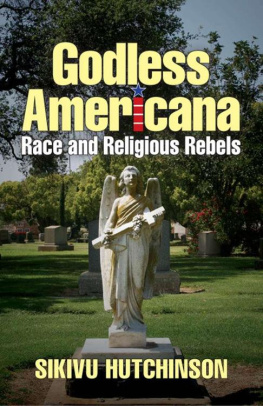BFI Film Classics
The BFI Film Classics is a series of books that introduces, interprets and celebrates landmarks of world cinema. Each volume offers an argument for the films classic status, together with discussion of its production and reception history, its place within a genre or national cinema, an account of its technical and aesthetic importance, and in many cases, the authors personal response to the film.
For a full list of titles available in the series, please visit our website: www.palgrave.com/bfi
Magnificently concentrated examples of flowing freeform critical poetry. Uncut
A formidable body of work collectively generating some fascinating insights into the evolution of cinema.
Times Higher Education Supplement
The series is a landmark in film criticism.
Quarterly Review of Film and Video
Possibly the most bountiful book series in the history of film criticism.
Jonathan Rosenbaum, Film Comment
Editorial Advisory Board
Geoff Andrew, British Film Institute
James Bell, Sight & Sound
Edward Buscombe
William Germano, The Cooper Union for the Advancement of Science and Art
Lalitha Gopalan, University of Texas at Austin
Lee Grieveson, University College London
Nick James, Editor, Sight & Sound
Laura Mulvey, Birkbeck College, University of London
Alastair Phillips, University of Warwick
Dana Polan, New York University
B. Ruby Rich, University of California, Santa Cruz
Amy Villarejo, Cornell University
Pandoras Box
Pamela Hutchinson

Pamela Hutchinson 2018
All rights reserved. No reproduction, copy or transmission of this publication may be made without written permission. No portion of this publication may be reproduced, copied or transmitted save with written permission or in accordance with the provisions of the Copyright, Designs and Patents Act 1988, or under the terms of any licence permitting limited copying issued by the Copyright Licensing Agency, Saffron House, 610 Kirby Street, London EC1N 8TS.
Any person who does any unauthorized act in relation to this publication may be liable to criminal prosecution and civil claims for damages.
The author has asserted his right to be identified as the author of this work in accordance with the Copyright, Designs and Patents Act 1988.
First published in 2018 by
PALGRAVE
on behalf of the
BRITISH FILM INSTITUTE
21 Stephen Street, London, W1T 1LN
www.bfi.org.uk
Theres more to discover about film and television through the BFI. Our world-renowned archive, cinemas, festivals, films, publications and learning resources are here to inspire you.
Palgrave in the UK is an imprint of Macmillan Publishers Limited, registered in England, company number 785998, of 4 Crinan Street, London, N1 9XW. Palgrave and Macmillan are registered trademarks in the United States, the United Kingdom, Europe and other countries.
Series cover design: Ashley Western
Series text design: ketchup/SE14
Set by Integra Software Services Pvt., Pondicherry, India
This book is printed on paper suitable for recycling and made from fully managed and sustained forest sources. Logging, pulping and manufacturing processes are expected to conform to the environmental regulations of the country of origin.
British Library Cataloguing-in-Publication Data
A catalogue record for this book is available from the British Library.
A catalog record for this book is available from the Library of Congress.
ISBN 9781844579662
Acknowledgments
This book would be poorer without the generosity, insight and assistance of Kevin Brownlow, Margaret Deriaz, Bryony Dixon, Ali Smith, Martin Koerber, Thomas Gladysz, Tim Bergfelder, Neil Brand, Lawrence Napper, Michael Omasta, Clarissa Sutherland, Philippa Hudson and Franziska Lawther. It would not be here at all without Jenna Steventon, James Bell and Amy Sargeant. Thank you all. Many thanks also to Nathalie Morris and Jonny Davies at the BFI Special Collections and the staff of the BFI Reuben Library, as well as Gerrit Thies and Diana Kluge at the Deutsche Kinemathek.
To Nick, thank you for the tea, and so much more.
Brooks and Pabst: The Star and the Director
Pandoras Box (Die Bchse der Pandora, 1929) is a confounding film. It failed commercially, then soared in popularity long after it might have been forgotten. It is a masterpiece that has been mistreated and misunderstood; a work by a respected director that has come to be known as a vehicle for a foreign starlet. Exploring the film entails a journey back and forth between Europe and America, and occasionally into the gutter. The spark that illuminated this perplexing, dazzling film was the creative tension between two of film historys most unusual characters. Louise Brooks was a reckless hedonist, a dancer turned movie actress with a riotous love life; Georg Wilhelm Pabst was a serious and diligent actor turned director with a passion for the cinema and social justice. Pabst summoned this underperforming Hollywood starlet to Europe, where she made three films that would outshine the rest of her career, the foundation for her lasting renown then their paths diverged just a few years later. Their working relationship was dominated by conflict and a toxic sexual frisson, but they both found their greatest creative success in Europe, and butted heads with Hollywood executives. Each knew both warm critical acclaim and the cold shoulder of the industry. They were fiercely opposed to censorship and artistic timidity, and yet the films they made together were mutilated in the name of morality.
Louise Brooks, the scandalous starlet
Born in 1906 in Cherryvale, Kansas, to a mother who prioritised her own artistic endeavours over childcare, Brooks grew up with few rules and free rein to indulge her passion for dance. She joined the avant-garde Denishawn dance troupe in 1922 as a teenager, and travelled with them to New York, where she discovered the temptations of big-city nightlife and lost her rustic accent, but she was dismissed after too many infractions of their rules. She next worked as a Broadway dancer, first for the George White Scandals, then the Ziegfeld Follies, and became known, and notorious, on the New York party scene. She was asked to leave two hotels because of her scandalous behaviour, which boiled down to late nights, skimpy clothing and lost weekends of lovemaking and liquor. Her distinctive look, capped by her modern bobbed haircut, was the inspiration for the racy title character in the long-running syndicated comic strip, Dixie Dugan.

Eugene Richee portrait of Louise Brooks in 1928

Louise Brooks and Richard Arlen in Beggars of Life (William Wellman, 1928)
A pretty dancer in Manhattan was likely to be offered a movie contract, and Brooks signed with Paramount, working initially at its Astoria Studios on Long Island. By the time she moved to Hollywood, she was one of Paramounts most photographed actors, her impish face and trim dancers body set off by an expensive designer wardrobe and that glossy bob: shorter and more severe than her peers dared to wear. It is worth stating at the outset that Brooks was divertingly beautiful, and appeared all the more so because she never seemed to simper or seek approval. In fact, her glittering eyes were constantly looking out for the next good time. Rather than romantic leads, Brooks specialised in Hollywoods idea of a bad girl: two-timers and boyfriend stealers. It was not until
Next page
















